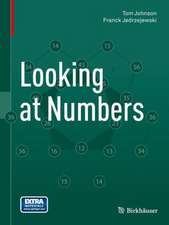The Simplex Method: A Probabilistic Analysis: Algorithms and Combinatorics, cartea 1
Autor Karl Heinz Borgwardten Limba Engleză Paperback – noi 1986
Din seria Algorithms and Combinatorics
- 18%
 Preț: 1123.67 lei
Preț: 1123.67 lei -
 Preț: 391.61 lei
Preț: 391.61 lei - 15%
 Preț: 639.08 lei
Preț: 639.08 lei - 15%
 Preț: 658.22 lei
Preț: 658.22 lei - 18%
 Preț: 965.34 lei
Preț: 965.34 lei - 15%
 Preț: 649.22 lei
Preț: 649.22 lei - 18%
 Preț: 781.00 lei
Preț: 781.00 lei - 18%
 Preț: 950.96 lei
Preț: 950.96 lei - 18%
 Preț: 953.35 lei
Preț: 953.35 lei - 18%
 Preț: 897.65 lei
Preț: 897.65 lei -
 Preț: 512.18 lei
Preț: 512.18 lei - 15%
 Preț: 638.89 lei
Preț: 638.89 lei - 18%
 Preț: 897.65 lei
Preț: 897.65 lei - 24%
 Preț: 912.88 lei
Preț: 912.88 lei - 18%
 Preț: 979.70 lei
Preț: 979.70 lei - 18%
 Preț: 967.22 lei
Preț: 967.22 lei - 20%
 Preț: 500.20 lei
Preț: 500.20 lei - 15%
 Preț: 593.08 lei
Preț: 593.08 lei -
 Preț: 399.50 lei
Preț: 399.50 lei - 15%
 Preț: 644.18 lei
Preț: 644.18 lei - 18%
 Preț: 972.42 lei
Preț: 972.42 lei -
 Preț: 386.00 lei
Preț: 386.00 lei - 15%
 Preț: 589.14 lei
Preț: 589.14 lei - 15%
 Preț: 642.51 lei
Preț: 642.51 lei - 15%
 Preț: 656.43 lei
Preț: 656.43 lei -
 Preț: 381.43 lei
Preț: 381.43 lei
Preț: 387.38 lei
Nou
Puncte Express: 581
Preț estimativ în valută:
74.13€ • 79.27$ • 61.80£
74.13€ • 79.27$ • 61.80£
Carte tipărită la comandă
Livrare economică 18 aprilie-02 mai
Preluare comenzi: 021 569.72.76
Specificații
ISBN-13: 9783540170969
ISBN-10: 3540170960
Pagini: 284
Ilustrații: XII, 270 p. 3 illus.
Dimensiuni: 155 x 235 x 15 mm
Greutate: 0.4 kg
Ediția:Softcover reprint of the original 1st ed. 1987
Editura: Springer Berlin, Heidelberg
Colecția Springer
Seria Algorithms and Combinatorics
Locul publicării:Berlin, Heidelberg, Germany
ISBN-10: 3540170960
Pagini: 284
Ilustrații: XII, 270 p. 3 illus.
Dimensiuni: 155 x 235 x 15 mm
Greutate: 0.4 kg
Ediția:Softcover reprint of the original 1st ed. 1987
Editura: Springer Berlin, Heidelberg
Colecția Springer
Seria Algorithms and Combinatorics
Locul publicării:Berlin, Heidelberg, Germany
Public țintă
ResearchCuprins
0 Introduction.- Formulation of the problem and basic notation.- 1 The problem.- A Historical Overview.- 2 The gap between worst case and practical experience.- 3 Alternative algorithms.- 4 Results of stochastic geometry.- 5 The results of the author.- 6 The work of Smale.- 7 The paper of Haimovich.- 8 Quadratic expected number of steps for sign-invariance model.- Discussion of different stochastic models.- 9 What is the “Real World Model”?.- Outline of Chapters 1–5.- 10 The basic ideas and the methods of this book.- 11 The results of this book.- 12 Conclusion and conjectures.- 1 The Shadow-Vertex Algorithm.- 1 Primal interpretation.- 2 Dual interpretation.- 3 Numerical realization of the algorithm.- 4 The algorithm for Phase I.- 2 The Average Number of Pivot Steps.- 1 The probability space.- 2 An integral formula for the expected number of S.- 3 A transformation of coordinates.- 4 Generalizations.- 3 The Polynomiality of the Expected Number of Steps.- 1 Comparison of two integrals.- 2 An application of Cavalieri’s Principle.- 3 The influence of the distribution.- 4 Evaluation of the quotient.- 5 The average number of steps in our complete Simplex-Method.- 4 Asymptotic Results.- 1 An asymptotic upper bound in integral form.- 2 Asymptotic results for certain classes of distributions.- 3 Special distributions with bounded support.- 4 Asymptotic bounds under uniform distributions.- 5 Asymptotic bounds under Gaussian distribution.- 5 Problems with Nonnegativity Constraints.- 1 The geometry.- 2 The complete solution method.- 3 A simplification of the boundary-condition.- 4 Explicit formulation of the intersection-condition.- 5 Componentwise sign-independence and the intersection condition.- 6 The average number of pivot steps.- 6 Appendix.- 1 Gammafunction andBetafunction.- 2 Unit ball and unit sphere.- 3 Estimations under variation of the weights.- References.













